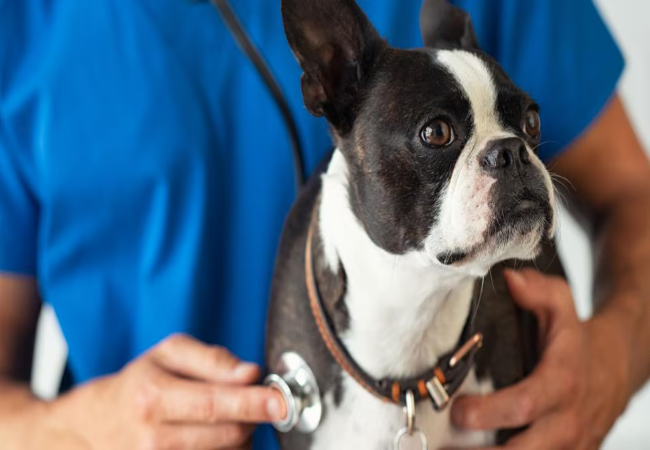Neuroaxonal Dystrophy in Dogs – Vet Guide 2025 🐶🧠🩺

In this article
Neuroaxonal Dystrophy in Dogs – Vet Guide 2025 🐶🧠🩺
By Dr. Duncan Houston BVSc
Hello, I’m Dr Duncan Houston, BVSc, founder of Ask A Vet. Neuroaxonal dystrophy (NAD) is a rare, inherited neurologic disorder that causes progressive damage to nerve axons, disrupting signals from the brain. While incurable, understanding the condition empowers owners to support quality of life and comfort. This in-depth 2025 guide covers causes, clinical signs, diagnostics (including genetic testing), and care strategies to help both you and your dog navigate NAD with compassion and knowledge.
📘 What Is Neuroaxonal Dystrophy?
NAD involves the swelling of axons—the long fibers that transmit nerve signals—forming 'spheroids' that disrupt communication in the central and peripheral nervous systems. As axons degenerate, dogs lose coordination, develop tremors, and may progress to paralysis or blindness.
🚩 Causes & Genetic Risk
- Genetic inheritance: NAD is autosomal recessive—affected dogs inherit two altered genes. Carriers show no signs.
- Breed-specific mutations: PAPILLONS (PLA2G6 gene), Rottweilers (VPS11 gene), Spanish Water Dogs & Lagotto Romagnolos (TECPR2), Miniature American Shepherds (RNF170).
- Rare non-genetic cases: vitamin E deficiency, toxins, diabetes may mimic NAD.
👥 Who Is Affected?
NAD can appear in puppies or young adults, depending on the breed:
- Papillons: signs start between 1–4 months.
- Spanish Water Dogs/Lagotto: begins 6–11 months.
- Mini American Shepherds: onset at 2–4 years.
- Rottweilers: juvenile to young adult onset; typically slower progression.
🚨 Clinical Signs & Warning Signals
- Unsteady, high-stepping gait; stumbling & incoordination.
- Head tremors, intention tremor, nystagmus (eye flickering).
- Paw scuffing, dragging, wounds on paw tops.
- Proprioceptive deficits—knuckling, poor limb awareness.
- Later-stage: incontinence, behavioral change, vision or hearing loss.
- Potential laryngeal paralysis, pneumonia, and muscle rigidity as the disease advances.
🔍 How Is NAD Diagnosed?
- Breed & history: breeds known for NAD raise suspicion. Exclude other disease.
- Physical & neurologic exam: assesses ataxia, reflexes, sensory proprioception.
- Bloodwork: rule out vitamin‐E deficiency, diabetes, and infection.
- Imaging (MRI/CT): may reveal cerebellar hypoplasia or spinal changes, but primarily to exclude other issues.
- CSF analysis: rules out inflammatory infections.
- Genetic testing: DNA tests (Paw Print, VGL, Embark, Kennel Club, Labogen) identify known mutations and distinguish carriers/affected dogs.
- Confirmatory: nerve biopsy or necropsy reveals spheroid-filled axons in CNS.
💉 Treatment & Management Strategies
There is no cure for NAD. Treatment focuses on slowing progression, easing symptoms, and improving quality of life:
- Anti-inflammatories: Prednisone may reduce inflammatory components.
- Muscle relaxants: methocarbamol for tremors and rigidity.
- Vitamin E & omega-3 fatty acids: support nerve health and antioxidant protection.
- Nutrient-rich diet: high-quality protein, balanced fats to support nervous system function.
- Physiotherapy & rehabilitation: hydrotherapy, massage, passive ROM help maintain mobility.
- Supportive care: includes harnesses/slings, non-slip surfaces, assistive carts/wheels.
🏡 Home Care & Quality-of-Life Guidance
- Inspect paws for wounds; protect with booties or bandages.
- Provide daily, gentle exercise—short leash walks; repeat sessions.
- Use non-slip mats and ramps at home to reduce falls.
- Assist toileting if incontinence occurs; monitor skin health.
- Create a calm environment; avoid stairs and slippery areas.
- Maintain cognitive stimulation with scent games and gentle play.
- Track gait, appetite, mood; contact your vet or Ask A Vet with concerns.
📅 Prognosis & Long-Term Outlook
- Course varies by breed and mutation—rapid in puppies, slow in adults.
- Dogs can live with manageable signs for months to years with supportive care.
- In severe cases, inability to walk or eat may lead to consideration of euthanasia—guided by quality-of-life assessments.
- Genetic testing enables breeders to avoid producing affected puppies, promoting healthier future generations.
🐾 Ask A Vet, Woopf & Purrz Support
Facing NAD can feel overwhelming—help is here. Reach out to Ask A Vet for ongoing support. Find harnesses, supportive bedding,
✨ Key Takeaways
- NAD is a rare, inherited neurodegenerative disease causing axonal swelling and progressive neurologic decline.
- Signs include high-stepping gait, tremors, incoordination, proprioceptive deficits, and potential blindness or incontinence.
- Diagnosis is via breed history, neurologic exam, MRI, genetic testing, and (when needed) nerve biopsy.
- There's no cure—focus is on symptom management with meds, supplements, physical therapy, and home support.
- Quality of life can be maintained for months to years, depending on breed and progression.
- Genetic screening empowers breeders and owners to reduce incidence in future litters.
- Early support, compassionate care, and veterinary collaboration ensure every life with NAD is met with dignity and comfort. 🐾❤️
If your dog shows unusual gait, tremors, incontinence, or weakness, reach out to your vet or Ask A Vet. Early diagnosis and supportive care can improve your dog’s journey with neuroaxonal dystrophy. 🩺






